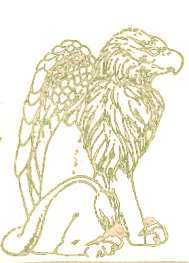Fern Growing Tips and Terms
HARDY FERN CARE
Ferns are some of the easiest care perennials around. They require a minimum of upkeep other than a spring tidy, if you desire, and a topdressing of their own chopped up fronds, well rotted-compost or manure. This annual mulch replaces any lost soil and keeps the rhizome or caudex cool and moist during the growing season. Ferns may be also left un-clipped, allowing the fronds to deteriorate and naturally mulch themselves as they do in nature. Most ferns prefer a loamy friable soil which is kept evenly moist during the growing season. Some ferns are more drought tolerant than others and can survive in a surprising variety of locations, especially once well established after a few seasons of auxillary watering. With few exceptions, most ferns do not like mid-day sun from approximately 11 am - 2 pm. Please note the following cultural requirements on each entry: Sun requirements: Part Sun = Up to 6 hours of direct morning and/or late afternoon sun, no hot mid-day sun Some Sun = A few hours of direct or indirect sun in the morning and or late afternoon, no hot mid-day sun
Part Shade = These ferns prefer dappled or filtered light throughout the day or constant indirect light. No hot mid-day sun.
Full shade = Ferns that perform well in very shady conditions Moisture Requirements: Wet = These fern prefer very wet conditions such as a bog or stream. Evenly Moist = These ferns do not like to dry out Slightly Moist = These ferns will tolerate variance in moisture but still don't like to be dry all the time Dryish = These ferns need very little water once established
Frond Condition: Describes the habit of the fronds themselves through out the season Evergreen = Ferns which maintain their fronds for at least 12 months which is usually until the new growth has begun.
Wintergreen = I prefer to use this term for those ferns which have a spring or summer dormancy pushing up their growth late in the traditional growing season and holding green throughout the winter months.
Semi-Evergreen = Ferns which maintain their fronds for at least 8-9 months. Deterioration begins with the supporting stipe (stem) and moves gradually up to the fleshy blade (foliage). Fronds from this group usually remain quite green after they are relaxed onto the ground. Clipping the spent fronds in March or April gives them a tidier look in the garden as new growth commences.
Sub-Evergreen = Ferns in this group maintain their fronds 6-8 months deteriorating much more rapidly on the ground than the semi-evergreen group. Clip spent fronds in March or April for tidier appearance in the garden.
Deciduous = Ferns in this group respond quite quickly to frost and deteriorate rapidly thereafter. A few in this group will have woody stipes remaining which can be clipped in March or April for a neater garden look.
TREE FERNS
Ideal growing conditions for tree ferns requires protection from wind and moist, humus-rich soil and high atmospheric humidity. It is crucial to have an abundant supply of moisture on the root system at all times whether in the ground or in a container. Overhead watering is best for proper frond development. Do not remove spent fronds until new croziers appear.
XERIC FERNS
Dryland, desert, or xeric ferns require porous soils which drain well and good air circulation. They do best with their roots tucked under a rock or with a gravely mulch to keep the roots cool and moist and their fronds dry and well aerated. If kept in containers do not allow them to go completely dormant and curl up. Many of them make excellent house plants if provided adequate light.
Leave Judith Plant Questions at: fancyfronds@gmail.com
Fancy Fronds Nursery PO Box 1090 Gold Bar, WA 98251 (360) 793-1472




